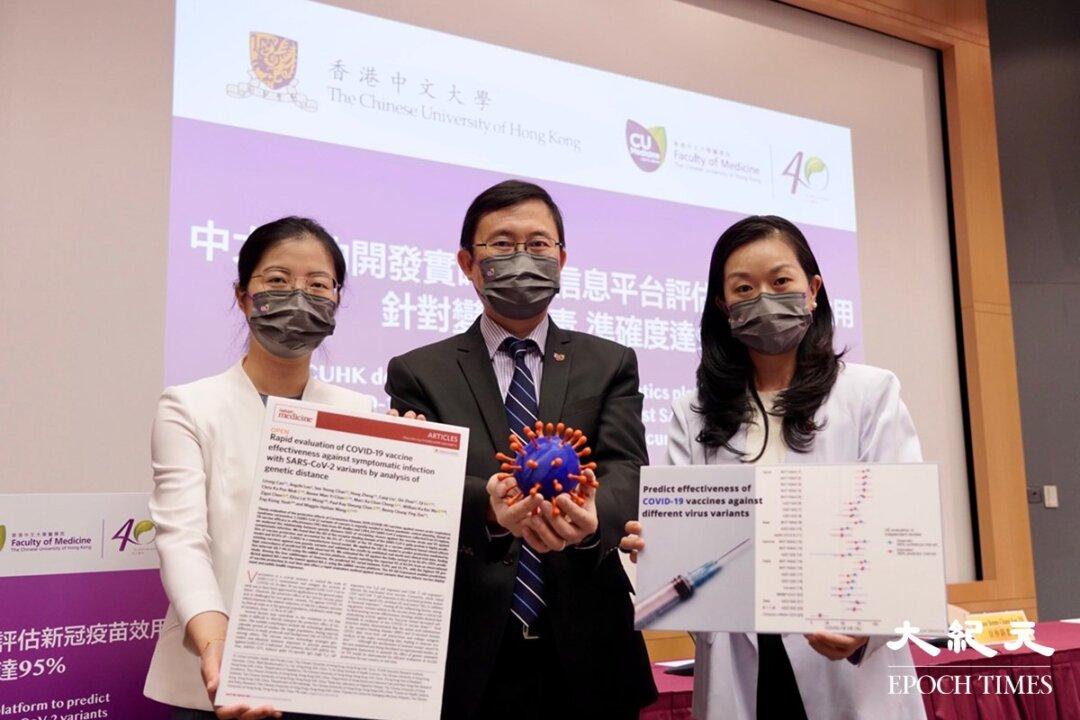The Chinese University of Hong Kong’s (CUHK) Faculty of Medicine has developed the world’s first algorithm to rapidly evaluate the effectiveness of vaccines used to combat SARS-CoV-2 variants. According to the article published in the journal of Nature Medicine, the algorithm delivers a 95 percent rate of accuracy when predicting a vaccine’s efficacy and can be used to determine which ingredients would offer more protection.
CUHK’s Faculty of Medicine staff introduced its new bioinformatic algorithm during a July 14 press conference held at the university’s Jockey Club School of Public Health and Primary Care.





